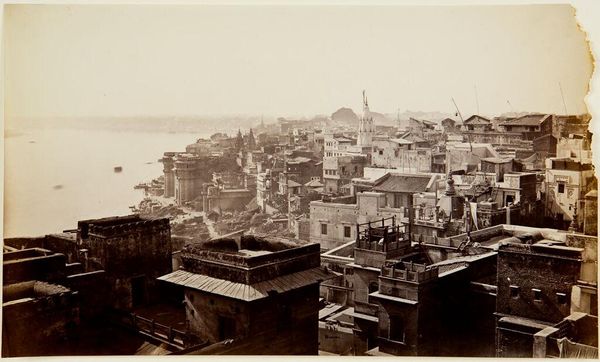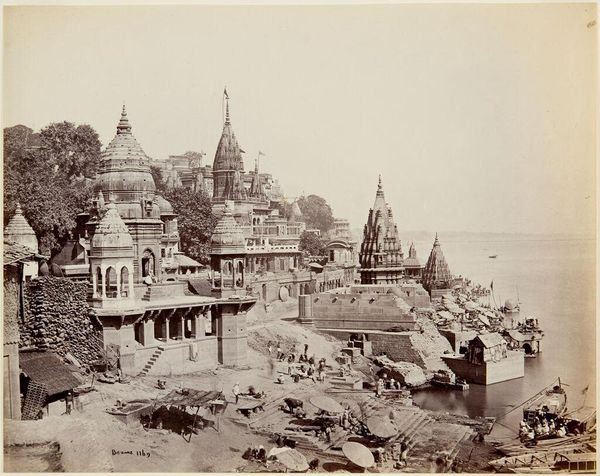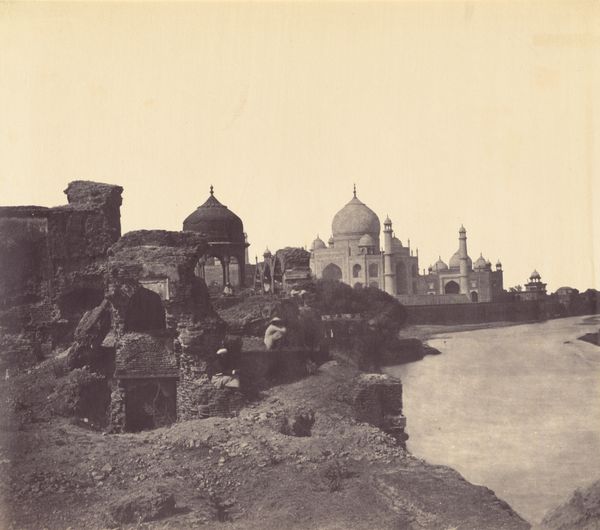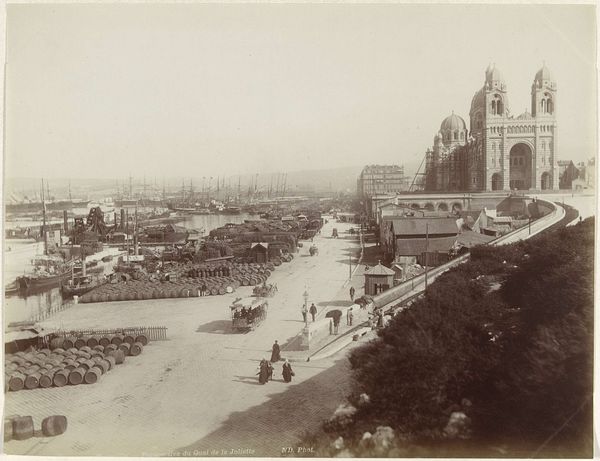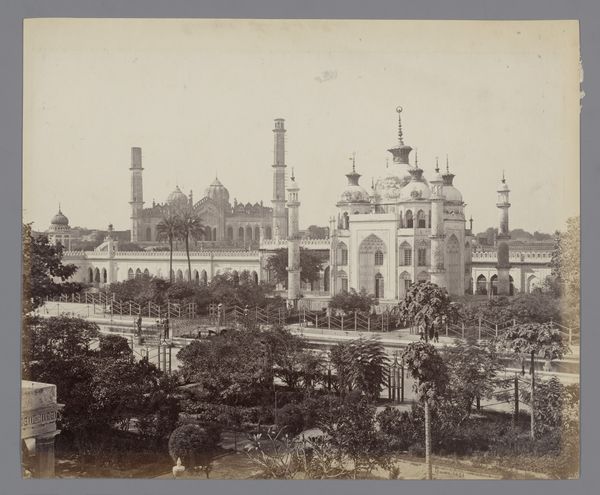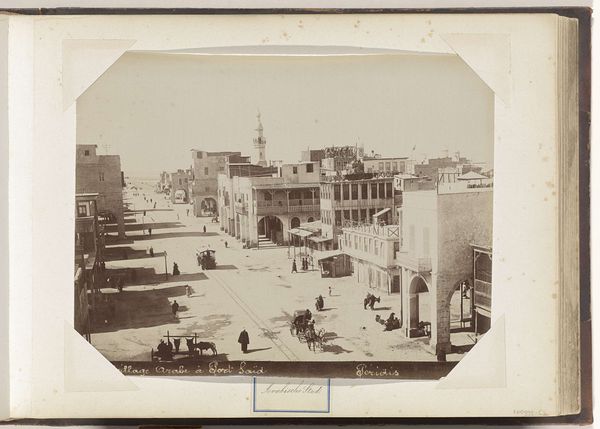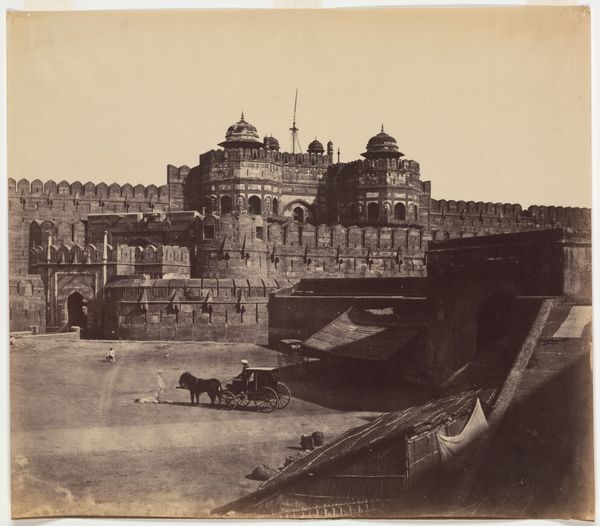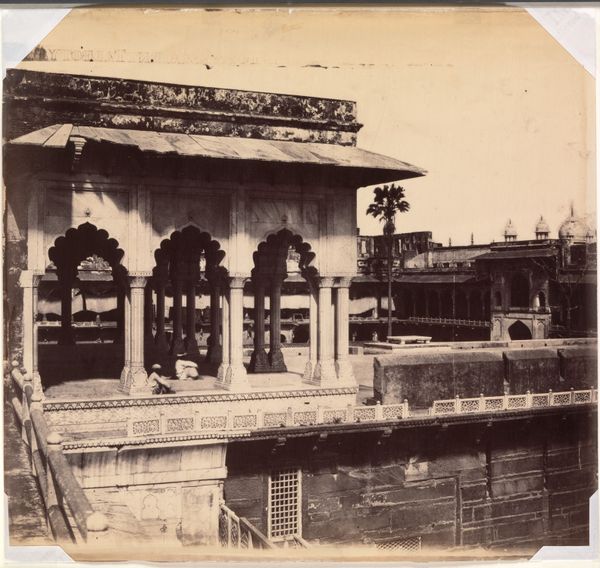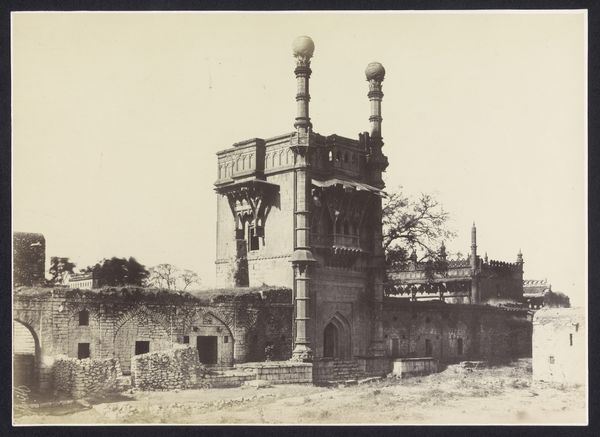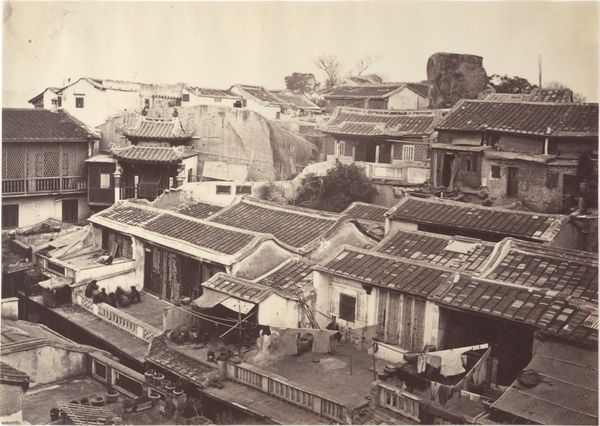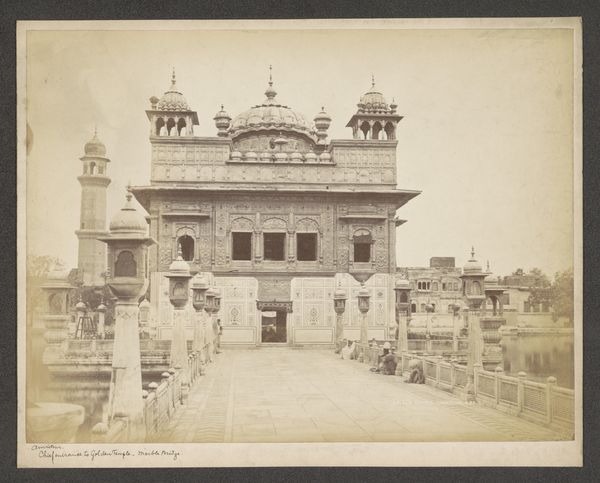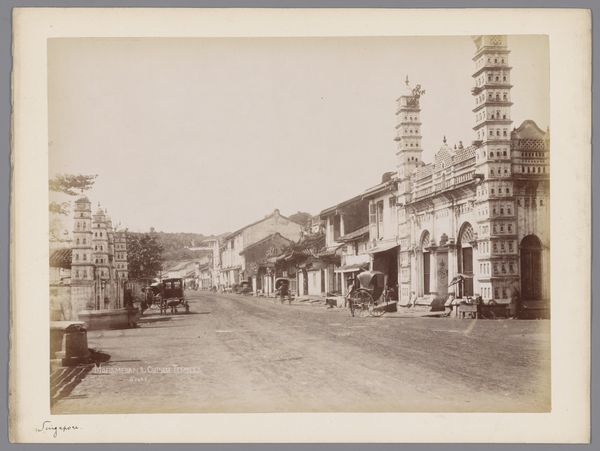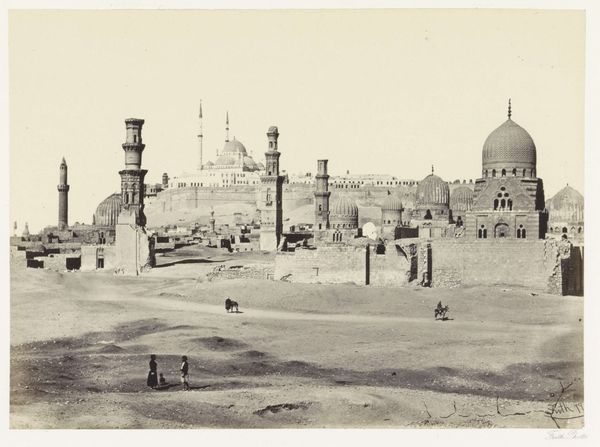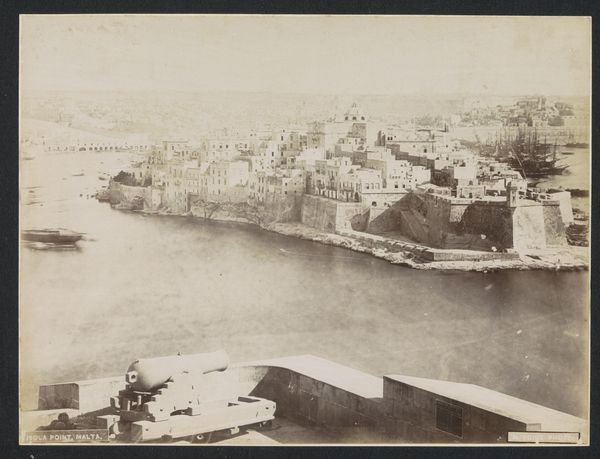
Benares, the Great Mosque of Arungzebe (and Adjoining Ghats) 1865 - 1866
0:00
0:00
Dimensions: image: 23.5 x 28.5 cm (9 1/4 x 11 1/4 in.)
Copyright: CC0 1.0
Curator: This albumen silver print by Samuel Bourne captures Benares, featuring the Great Mosque of Arungzebe and adjoining ghats. The image is part of the Harvard Art Museums collection. Editor: The sepia tones imbue the scene with such a timeless, almost melancholic air, don't you think? The dense composition, contrasting architecture with bustling river activity, is striking. Curator: Bourne operated a commercial studio, and his work contributed to the colonial-era construction of India as an exoticized, knowable place for Western audiences. Note how the ghats, steps leading to the river, are teeming with life, almost staged. Editor: Precisely, those figures performing rituals and mundane tasks serve as potent symbols of purification and cyclical existence. The minarets towering in the background loom as a symbolic counterpoint. Curator: Indeed, the mosque's presence speaks to the complex socio-political dynamics of British India, representing both power and potential tension in the landscape. Editor: The Ganges itself, rendered so placid here, becomes a powerful emblem of continuity. It ties together the spiritual and the everyday. I find the photograph so compelling in its ability to capture a moment in time that seems to stretch into eternity. Curator: I agree; seeing the photograph as a moment in history, we are invited to reflect on how representations shape our understanding of other cultures and our own place in the world.
Comments
No comments
Be the first to comment and join the conversation on the ultimate creative platform.
